Understanding Suede, Protection and Cleaning 23rd April 2021

The first of a two part article on the protection, care and renovation of suede products. We look briefly at the history and production of suede and nubuck and introduce the two most essential suede care items.
Origins of Suede
Suede is traditional leather turned inside out, that is, the soft underside of the animal skin is used as the outer surface of the product rather than the usual external surface of the skin. Historically, the original use of suede was in the production of gloves - where their softness was prized.
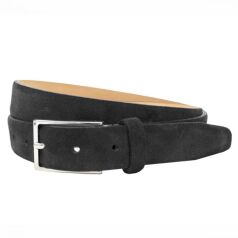
More Details

More Details
The word suede is derived from the French for Sweden - as the French cherished the luxury suede gloves made from Swedish suede leather.
Now of course suede is much more widely appreciated, both for its aesthetic beauty as well as its texture.
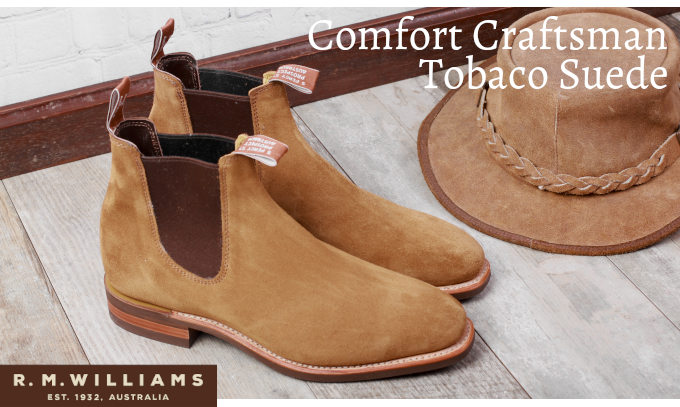
Suede Structure and Properties
Suede consists of a smooth surface made up of many strands of fibres. These fibres are often referred to as the nap. This under-surface of the skin is more susceptible to water ingress and staining due to its fibrous nature. Suede is less waterproof as a result and more susceptible to stains. It tends to be considered less durable when compared to traditional smooth leather.
Nubuck
Nubuck is worth considering alongside suede as the protection, care and renovation are largely the same. Whilst nubuck shares many of the above properties with suede, it is produced in an entirely different process. It is produced by sanding the outer layer of the skin. This results in the removal of much of the (protective) smooth outer layer of skin leaving a soft, smooth fibrous finish, with a much finer nap than suede. Despite losing the outer layer in this process, nubuck is generally considered more robust than suede and more resistant to stains, though clearly less though than traditional smooth leather.
Repello Suede
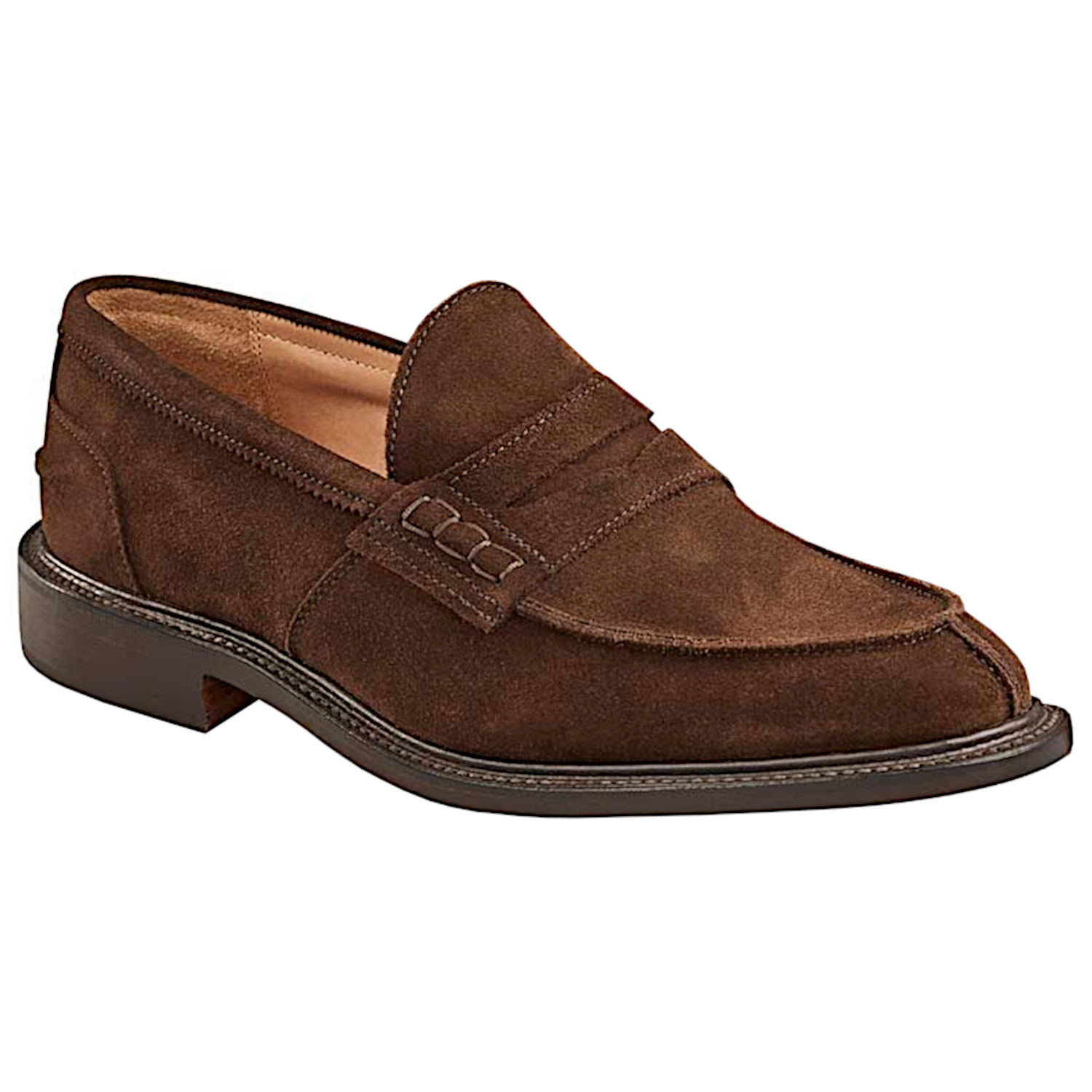 A particular type of suede, produced by Steads tannery is Repello Suede. Used by Trickers amongst others, it is produced by treatment with ’Scotch Guard’ during the tanning process. This gives the suede a built-in water resistance which lasts for the life of the product.
A particular type of suede, produced by Steads tannery is Repello Suede. Used by Trickers amongst others, it is produced by treatment with ’Scotch Guard’ during the tanning process. This gives the suede a built-in water resistance which lasts for the life of the product.
Read More: Repello Calf - Charles F Stead and Co Ltd.
Dispelling the 'Suede is Delicate' Myth
With the right protection and care, suede shoes can last many years. Your author has personal experience of suede boots which have outlasted leather equivalents. Suede is actually superior to smooth leather in some respects:
1) Suede is Resistant to Scratches
An expensive pair of smooth leather Oxfords can easily be rendered auction fodder if they are scratched on the vamp. All that wonderful smooth calf leather can be disrupted by an unwelcome intrusion from a metal car pedal or mistimed step on a concrete curb. Polishing the shoe will remove minor abrasions of course, but not disruptions of the outer layer of the leather. Suede is not as susceptible to this sort of abrasion. Of course, it can be lacerated if you try hard enough, but it is much more resistant to scratches than a smooth calf shoe.
2) Suede Doesn’t Crease (As Much)
If you find a last which fits you well, you will hopefully not be troubled too much by creasing on the vamp of your shiny new smooth leather chukka boots or brogues. However, some degree of creasing occurs with all shoes - and over time these can contribute to the shoe ageing in both appearance and the durability of the leather. Suede does not exhibit prominent creasing because its outer layer is soft and fibrous, preserving the original aesthetics for longer.
Suede Care Essentials
If you have no other items in your suede care armoury, then you should at least have a protector spray and a suede brush. Caring for suede involves no messing around with polishes which might stain your hands or clothes or worse. A simple brush to remove dust and dried dirt and a spray to reapply water repellant properties will keep your suede looking as good as new. This will be all that is required 90% of the time.
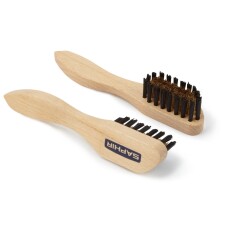
More Details
Protective Spray
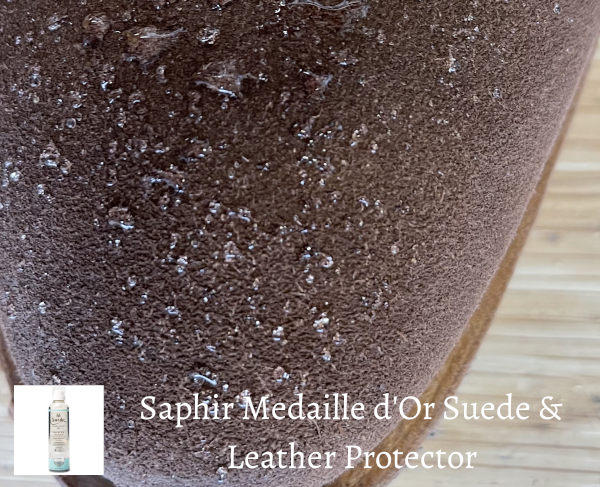 Protection, protection, protection! It cannot be emphasised enough that the key to keeping your suede loafers looking pristine is to use a good protection product. These products, and there are a great many of them, are water repellant and usually delivered in the form of a spray. The suede should be clean and dry before use. When dry, the product forms a protective water repellant surface on the leather - the image above shows how the new shipping friendly (see below) Saphir product performs on a pair of Barker suede boots. It is frequently recommended to apply two coats - and this would seem wise, particularly in wet climates.
Protection, protection, protection! It cannot be emphasised enough that the key to keeping your suede loafers looking pristine is to use a good protection product. These products, and there are a great many of them, are water repellant and usually delivered in the form of a spray. The suede should be clean and dry before use. When dry, the product forms a protective water repellant surface on the leather - the image above shows how the new shipping friendly (see below) Saphir product performs on a pair of Barker suede boots. It is frequently recommended to apply two coats - and this would seem wise, particularly in wet climates.
The effect duration is dependant on the wear of the footwear. How often they should be reapplied is open to debate but one every 3 to 6 months would seem reasonable, depending on the usage.
There are many protectors on the market, and of course, we offer a good selection. Saphir Medaille d’Or products are generally considered the gold standard - and we certainly have good experience with the Super Invulner Aerosol spray - though we cannot ship it to our customers because it is flammable. Fortunately, Saphir has recently introduced a new spray that uses a slightly pressured container which it is possible to send out by post (pictured above).
We have used this product on some of our Edward and James products - and found that it works very well - fortunately, the British wet weather provides ample opportunity for testing. The spray rendered the boot immiscible to water in light showers, though more persistent rain will lead to parts of the boot absorbing water. Overall its performance was at least as good as any aerosol product we have tried.
Suede Brush
The other essential suede care item is the humble suede brush. These can vary from nylon to brass bristles - and in the case of the Saphir example a combination of brass and other, softer bristles.
The Dasco nylon brush has long been popular with our customers. It combines the softer nylon bristles with a rubber edge which can be used to remove stubborn marks and stains (see the next instalment of this article for more details).
The Saphir Brush (pictured above) probably finds the best balance between a stiff brush to remove stubborn dirt whilst not being likely to damage the nap. We would suggest caution when using this on nubuck - the Dasco brush would probably be better for this as it is less likely to cause scratching.
The process of brushing your suede is simple enough - wait until the boot is dry then briskly brush the whole boot paying particular attention to any dried in dirt. We will discuss how to remove more stubborn dirt and stains in the next instalment.
Next Instalment: How to Renovate Your Suede
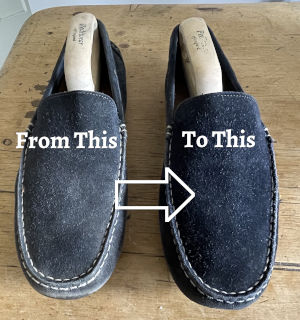
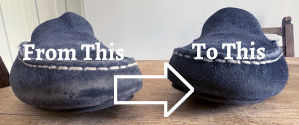
If you enjoyed this article - please share with your friends...
